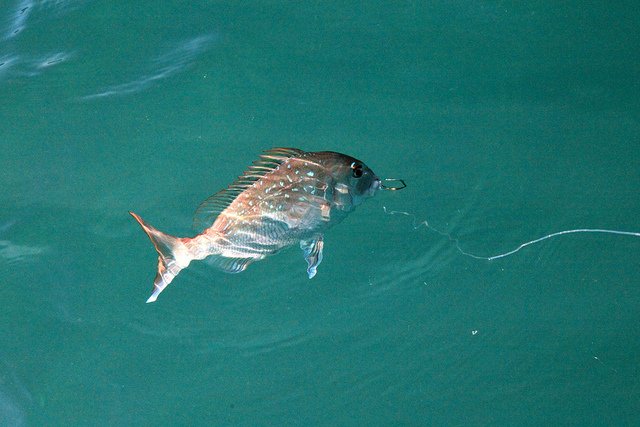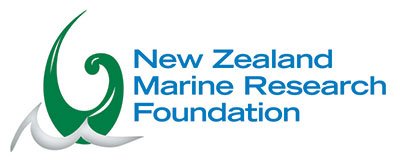
Good information is one of the most important tools in fisheries management, but to make the most of research you have to ask the right questions. Only then you will get the clear answers that are able to be applied to the issues of the day.
Until recently, marine research has focused on managing the commercial fishery and little else, leaving many important questions unanswered. The New Zealand Marine Research Foundation promotes and funds projects that ask the right questions – ones that address public concerns and provide the tools to make a difference.
Projects commissioned by the Foundation:
-

Estimating the Contribution of Recreational Fishing to the NZ Economy (2014-2016)
In 2014 the New Zealand Marine Research Foundation commissioned research to generate statistically valid estimates of the economics related to recreational fishing, including expenditures, jobs, tax revenues, income and other economic contributions. Research results have been collated in a report: Recreational Fishing in New Zealand: A Billion Dollar Industry (March 2016).
-

Tracking the Movements of Rig Sharks (2011-2015)
Rig, sometimes known as lemon shark, spotted dog fish, or smoothhound, are found in shallow coastal waters, estuaries and harbours around New Zealand and often caught by recreational fishers. The objective of this project, in partnership with Victoria University Wellington, is to identify the movement patterns of adult rig during their spawning season and to present this information on a website for educational purposes.
-

Fish Welfare (2012-2013)
This research assisted the NZSFC in their preparation for a submission on the animal welfare act review. The trustees were pleased to see the professional submission made and showed the NZSFC to be a contact of value for any future work or consultation on fish welfare by the government. A nationwide survey on current fishing practice and attitudes to animal welfare when hunting or fishing was undertaken by Horizon Research. This information will help inform the NZSFC submission on the review of the Animal Welfare Act 1999.
-

Trends in Yellowfin Tuna Catch in New Zealand Waters (2012)
The objective of this project was to document the decline in yellowfin tuna catch in New Zealand using catch record from commercial tuna longliners and clubs affiliated to the NZ Sport Fishing Council (NZSFC). Summary catch and effort data from all tuna fleets in the Western and Central Pacific was as available from the Secretariat of the Pacific Community (SPC) Oceanic Fisheries Programme public access database.
-

Value of Marine Recreational Fishing in NZ Feasibility Study (2011)
The value of fishing to fishers is measured by the concept of consumers’ surplus, which is the difference between the maximum amount that fishers would pay for their fishing activities (Gross Benefit) and what they actually do pay (Expenditure).
-

Striped Marlin Satellite Tagging - Stage 3 (2006-2009)
This project scaled up and improved electronic tag attachments to striped marlin. In all 24 more striped marlin were tagged and tracked, 20 of these carried two types of satellite tag to record detailed positions as well as detailed temperature, depth and light level. The data from the two kinds of tags were distinctly different, and surprisingly challenging to combine.
-

Pacific Bluefin Tuna Satellite Tagging (2007-2008)
The New Zealand Marine Research Foundation played a support role for a much larger project supported by universities and (at the time) the Ministry of Fisheries. For the first time in the southern hemisphere pop-up satellite tags were deployed on large Pacific bluefin tuna. These fish were tagged from recreational charter boats and one commercial hand line vessel fishing around the hoki trawlers working 50 milers off Hokitika and Greymouth.
-

Striped Marlin Satellite Tagging - Stage 2 (2005)
Popup Satellite Archival Transmitting tags deployed on striped marlin in 2003 provided detailed temperature and depth information but the locations calculated from day length and time at noon were approximate at best. A tag with its aerial exposed to the air for 5 or 10 minutes was needed to get an accurate location from the ARGOS satellite (GPS was too bulky and power hungry at that time).
-

Characterisation of the Amateur Fishery for Kahawai (Arripis Trutta) in New Zealand (2004)
The Ministry were about to introduce kahawai to the Quota Management System (in 2004) without any study bring together all the information on the amateur fishery of Kahawai. The NZ Marine Research Foundation funded this study to fill that gap.
-

Striped Marlin Satellite Tagging - Stage 1 (2003-2004)
This was the first project to deploy Popup Satellite Archival Transmitting tags on marlin in the Southern Hemisphere. These archival satellite tags are miniature computers which record and store water temperature, depth and movements of tagged animals for periods specified by the researchers before releasing from the fish and transmitting their data to satellites while floating at the surface.
-

Economic Contribution of the New Zealand Billfish Fishery (2000-2001)
The 2000-01 billfishery generated significant economic benefits for New Zealand, both regionally and nationally despite being a relatively poor billfish season. There were strong easterly winds for long periods and inconsistent fishing success. In total 577 face to face interviews were conducted from nine fishing ports in northern New Zealand between 7 January and 14 June 2001.
-

Trends in Striped Marlin Catch Rates in Northern NZ (1999-2003)
Annual postal surveys collected catch and fishing effort information from recreational charter skippers who target marlin in Northland. The 2003 survey is the 25th in the time series. The results provide an excellent record of trends in marlin catch rates from the leading professional skippers in New Zealand over that time.
